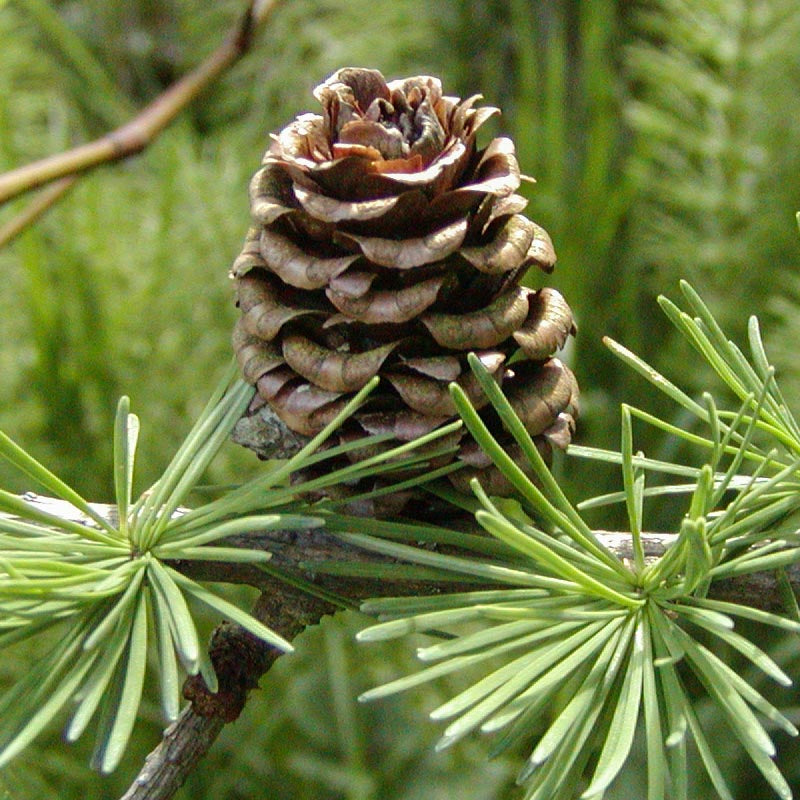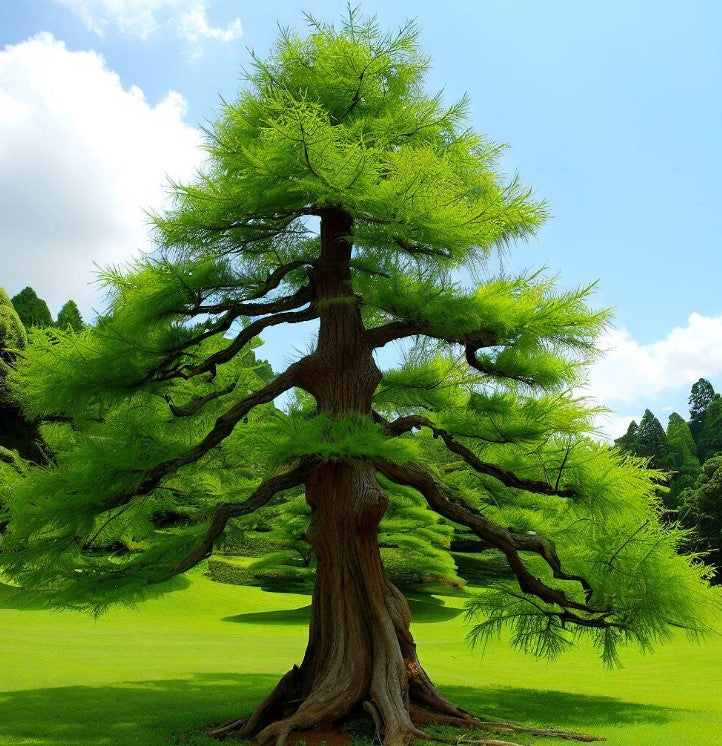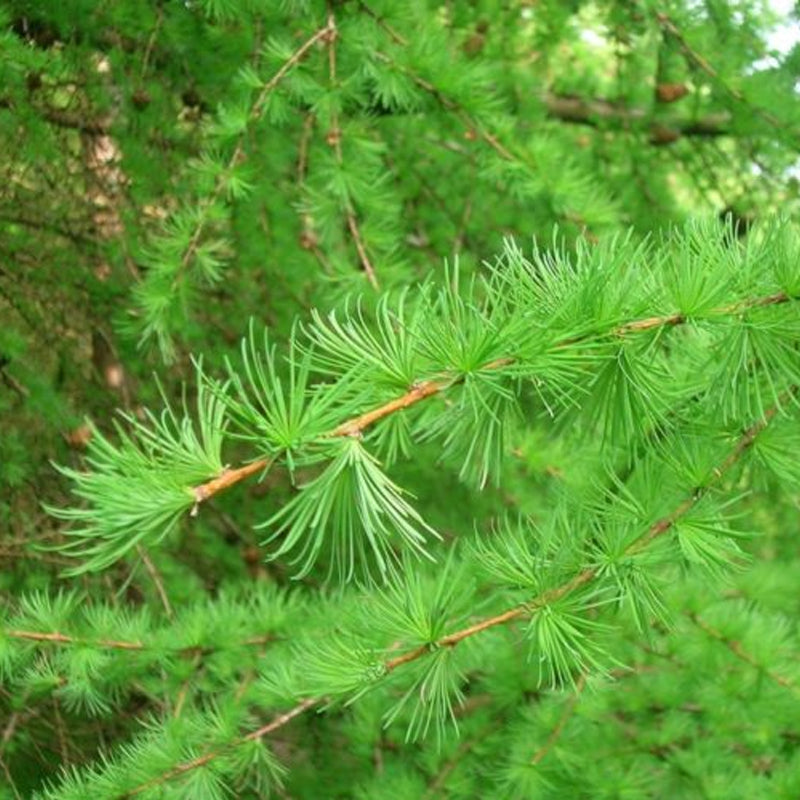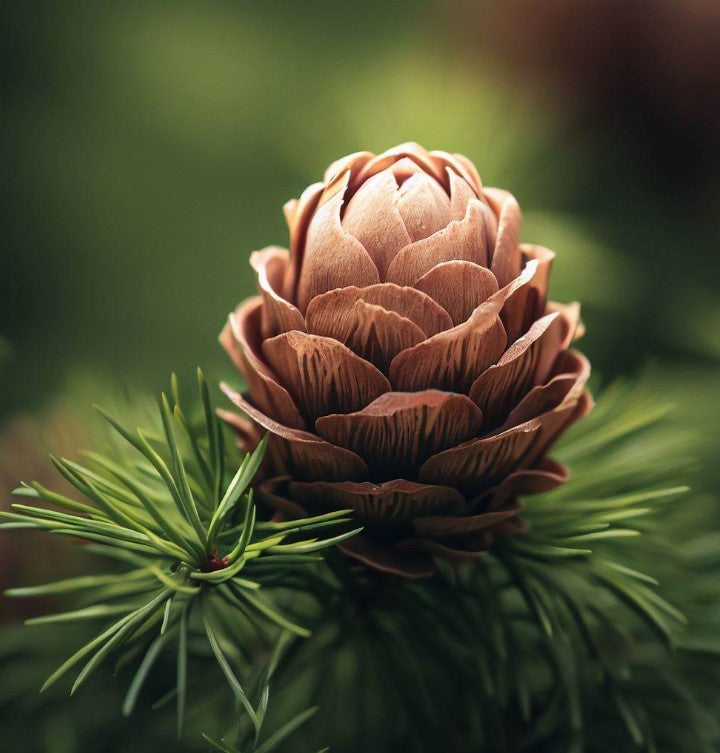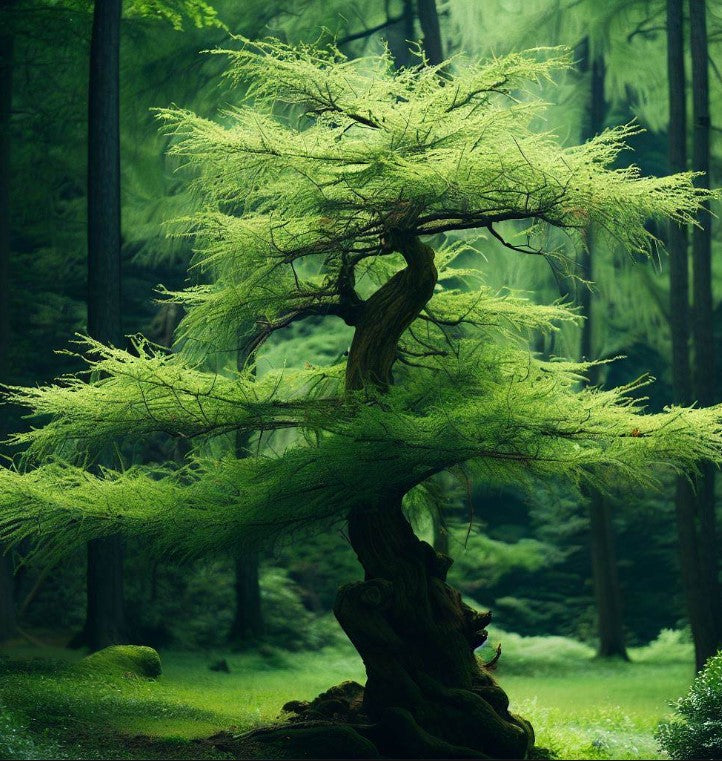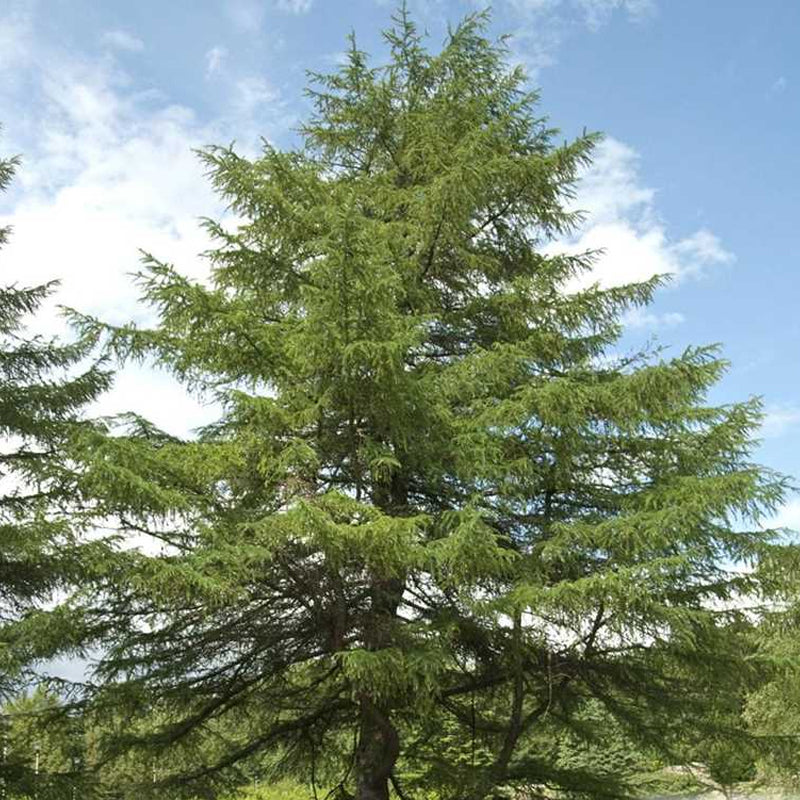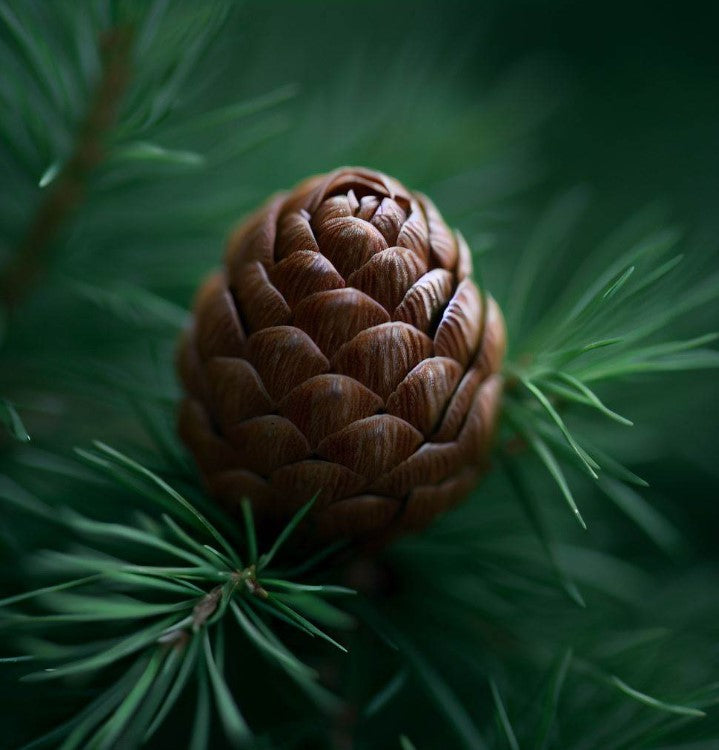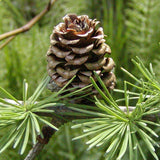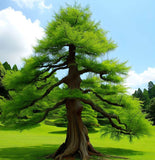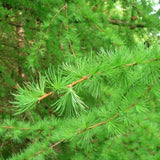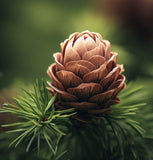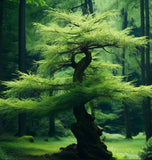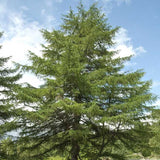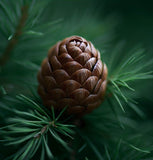Larix kaempferi (leptolepis ) (Japanese Larch)
Larix kaempferi (leptolepis ) (Japanese Larch) is a deciduous coniferous tree native to Japan. It is highly valued for its graceful form, vibrant foliage, and its ability to adapt to various growing conditions. Here is some information about the Japanese Larch:
Appearance: Japanese Larch is a medium to large-sized tree that can reach heights of 80 to 100 feet (24 to 30 meters) and has a pyramidal or conical shape when young, gradually becoming more open and spreading with age. The tree features a straight trunk and horizontal branches that ascend slightly. The bark is gray-brown and develops deep furrows with age.
Needles: The needles of the Japanese Larch are soft and arranged in clusters or fascicles along the branches. Each fascicle usually contains 10 to 20 needles. The needles are thin, flat, and needle-like, measuring about 0.8 to 1.6 inches (2 to 4 centimeters) long. They emerge light green in spring, turn dark green during the summer, and transform into a brilliant golden-yellow or orange in the fall before they drop.
Cones: Japanese Larch produces small, upright, oval-shaped cones that are about 0.6 to 1 inch (1.5 to 2.5 centimeters) long. The cones start out green and mature to a reddish-brown color. They contain numerous winged seeds that are released and dispersed by the wind.
Cultural Significance and Uses: Japanese Larch is widely planted as an ornamental tree in parks, gardens, and large landscapes due to its attractive foliage and elegant form. It is also valued as a timber tree, as its wood is durable and used for construction, furniture, and other applications. Japanese Larch is adaptable to various soil types and can tolerate both acidic and alkaline soils. It prefers full sun to partial shade and moderate moisture.
Autumn Color: One of the notable characteristics of Japanese Larch is its vibrant autumn color display. The foliage turns shades of golden-yellow, orange, and sometimes reddish-brown in the fall, creating a stunning visual spectacle.
It's important to note that Japanese Larch is susceptible to a fungal disease called Phytophthora ramorum, which causes a condition known as sudden larch death. This disease has caused concerns in some regions and may impact the health and longevity of Japanese Larch trees.
Botanical Name : Larix kaempferi
Common Name : Japanese Larch
Height : 100 ft
Spread : 30- 40 ft
Germination Info : 30-45 days cold moist stratification
Hardiness zone : 4-7
Average seed per ounce : Approx. 7500

